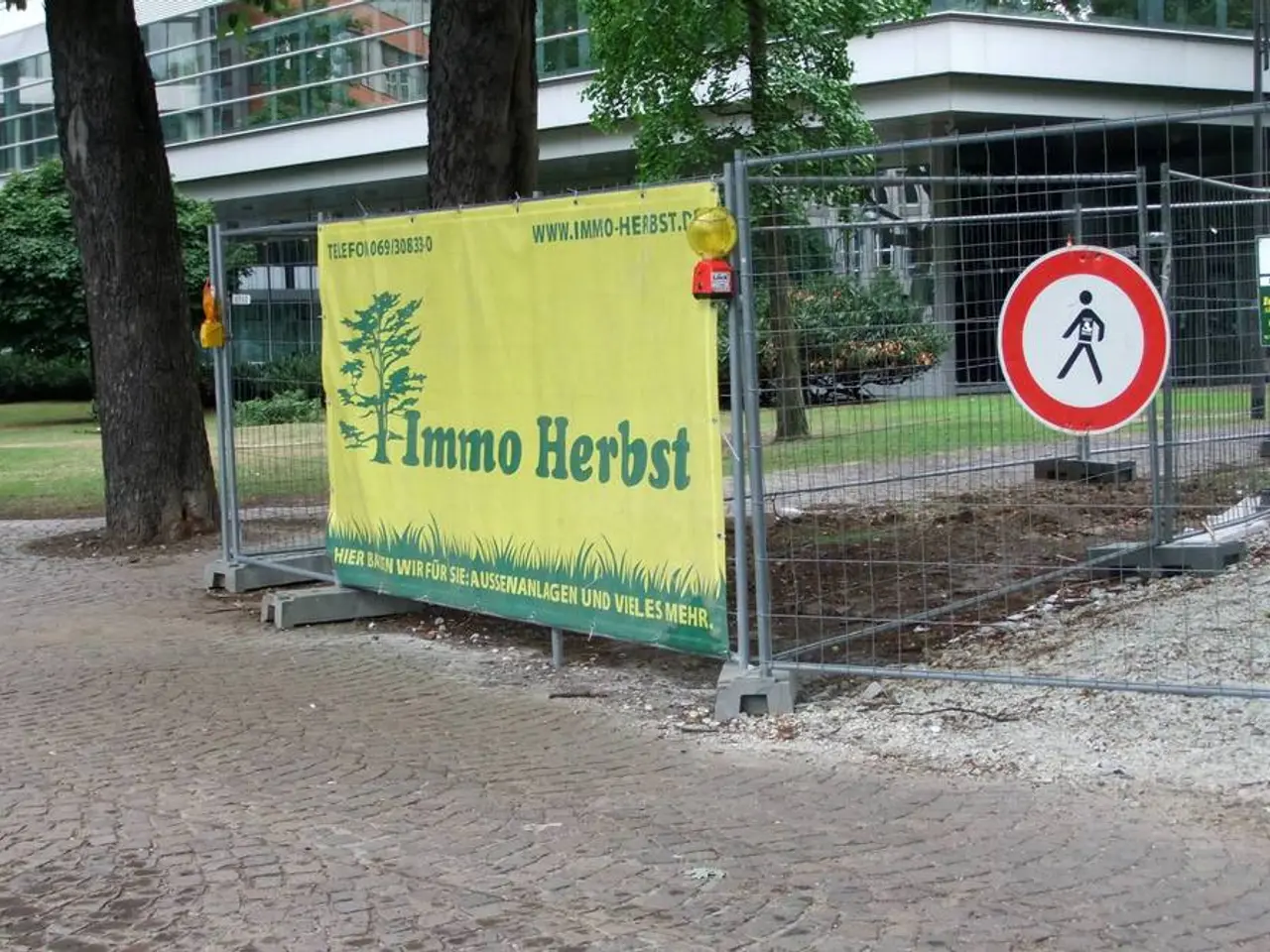Transforming Garden Debris into an Ecological Barrier: Constructing a Simple, Earth-Friendly Fence Using Yard Waste
In the world of gardening and landscaping, there's a unique and sustainable solution that's gaining popularity: dead hedges. These natural barriers, made from yard trimmings, serve as a practical and aesthetically pleasing alternative to traditional fencing and living hedges.
Dead hedges, also known as dead wood hedges, are constructed using upright wooden stakes in two offset rows, filled with shrub or tree prunings. Unlike their living counterparts, dead hedges do not require irrigation, fertilizer, or pruning, making them a low-maintenance option for busy gardeners.
The benefits of dead hedges are numerous. For one, they are cost-effective and sustainable, as they are made from cut branches and woody materials stacked to form barriers, often using local on-site vegetation. This makes them cheaper and environmentally friendly compared to manufactured fencing.
Another advantage is that dead hedges provide shelter and nesting places for various wildlife like birds, insects, and small mammals, enhancing biodiversity. They blend into the environment better than artificial fencing, preserving a natural landscape aesthetic. Moreover, they can serve as windbreakers around vegetable patches, flower beds, or seating areas.
However, dead hedges do have some drawbacks. They are less durable than fencing, as the materials will eventually decompose, and they offer less security or privacy than solid or living fences. They require periodic rebuilding as branches rot or collapse, and they can become untidy or ineffective as barriers if neglected.
Living hedges, on the other hand, offer year-round greenery and natural beauty. Properly maintained living hedges can last decades, providing habitat, improving air quality, and contributing to soil stability. They can serve as windbreaks, noise barriers, and privacy screens. However, they take time to grow thick enough to provide effective barriers, require regular pruning and care, and can be susceptible to pests or diseases.
Fencing offers instant, clear, and durable boundaries. It provides a strong physical barrier that can deter unwanted entry and requires less frequent maintenance than hedges, depending on the material. However, installation and material costs can be high, and fencing might not blend well into natural landscapes compared to hedges.
In summary, dead hedges are an eco-friendly, wildlife-supporting, and cost-effective boundary option but lack the durability and security of fencing and the aesthetic longevity of living hedges. They are best used where ecological benefits and temporary boundaries are priorities rather than permanent or high-security needs. In contrast, fencing provides strong, immediate, and long-lasting division, while living hedges contribute long-term ecological and aesthetic value but require patience and upkeep.
Teo Spengler, a master gardener and a docent at the San Francisco Botanical Garden, offers insights into dead hedges. Teo, who splits her life between San Francisco and the French Basque Country, having been raised in Alaska, has studied horticulture and written about nature, trees, plants, and gardening for over two decades. She emphasises that dead hedges are free to build and use up yard trimmings that are too big to compost, making them a practical choice for gardeners looking to reduce waste and save money.
So, whether you're a seasoned gardener or a novice looking to explore new landscaping options, dead hedges could be the perfect solution for your garden. Signing up for a platform newsletter may provide access to gardening tips, videos, information, and a free e-book titled "How to Grow Delicious Tomatoes". Happy gardening!
Dead hedges can be an excellent addition to home-and-garden lifestyle, especially for those who prioritize sustainability and wildlife habitat. Made from yard trimmings, they offer a cost-effective, eco-friendly alternative to traditional fencing, providing shelter for wildlife while blending into the natural landscape.
On the other hand, enthusiasts of home-and-garden and home improvement might find the lifestyle of a master gardener like Teo Spengler, who uses dead hedges to reduce waste and save money, inspiring. Teo, who shares her gardening knowledge through articles and a newsletter, could provide insights and tips for those looking to incorporate dead hedges into their home-and-garden plans.








